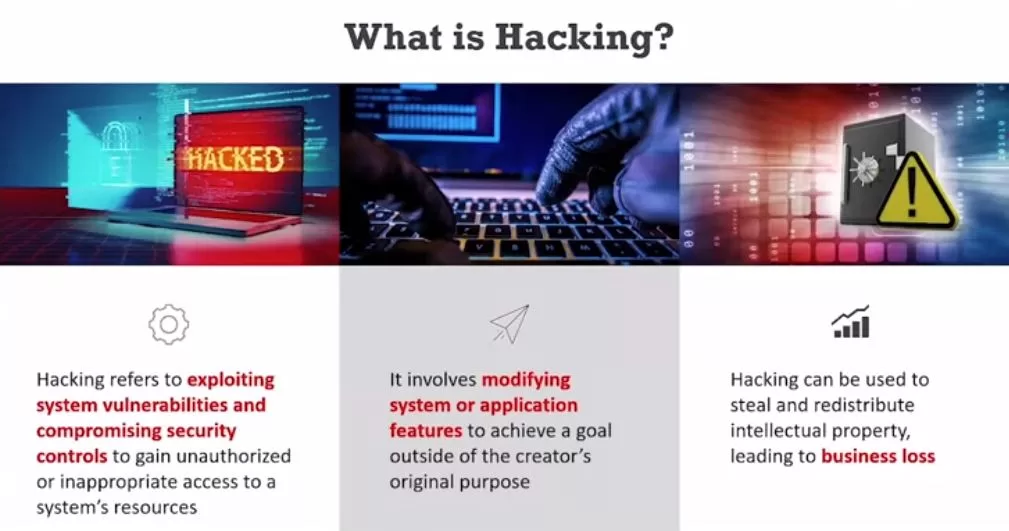Cell phone security has been a commonly overlooked threat for years. Phone security, in general, is one of those things that it’s not a problem until it is, and when it is, it’s a big problem. Every bit of practical information and access now fits in the palm of our hands, inside our smartphones. Learn how to mitigate the risk that cellphones carry as attackers turn to target them.
Today’s mobile “phone” is a networked computer, a data storage device, a navigational device, and a sound and video recorder. It’s a mobile bank and social network hub, a photo gallery, etc.
That’s great, right!?
Sure. However, all of these functions make our mobile devices desirable targets for malicious actors.
Since most of us don’t want to give up the ease of having all of our needs on one device, what can we do to stay safe?
Two Words: Phone Security.
Phone security is the countermeasure to their malicious attacks. It’s about defending against the wide range of mobile security threats confronting our mobile devices.
What is Phone Security?
Phone security, also known as mobile device security is the practice of defending mobile devices against a wide range of cyber-attack vectors that threaten users’ privacy, network login credentials, finances, and safety. It comprises a collection of technologies, controls, policies, and best practices. Phone security protects us from mobile security threats of all kinds.
This practice could also be explained as a set of tactics and tools that protect mobile devices against security threats. Although the components of mobile security vary depending on the demands of each firm, mobile security always entails authenticating users and controlling network access.
What are Mobile Security Threats?
A mobile security threat is a means of cyber-attack that targets mobile devices like smartphones and tablets. Like an attack on a PC or enterprise server, a mobile security threat exploits vulnerabilities in mobile software, hardware, and network connections to enable malicious and unauthorized activities on the device.
One example is when hackers gain access so they can use our mobile processing chips to mine cryptocurrencies or make them part of botnets. A bigger picture would be access and theft of identity and personal accounts, which they can steal and sell for as low as pennies and as high as thousands. In addition, hackers can hijack our mobile wallets and financial information for their benefit.
Understanding Phone Security Threats
Mobile devices may be attacked on several levels. This includes the possibility of malicious applications, network-level assaults, and the exploitation of device and mobile OS vulnerabilities.
Mobile security threats include theft of login credentials for corporate networks. Indeed, mobile phishing attacks, which use texts and emails to trick recipients into clicking on malicious URLs, have been up 85% in the last year.
Cybercriminals have increased their focus on mobile devices as their importance has grown. As a result, cyber threats targeting these devices have broadened.
Phone Security Threats to Watch Out For
There are many different types of mobile security threats. Although new attacks regularly come to the attention of cybersecurity experts; these are the most common ones:
Web-based mobile threats
Mobile websites can download malware onto our mobile devices without our permission or awareness. Phishing is a typical way attackers get us to click on links to sites containing mobile threats. For example, a hacker might set up a website that looks legitimate (e.g., like our banking site) to capture our login credentials. What can we do about web-based mobile threats? Security software on our phones can help detect malicious websites and phishing attempts. It also pays to be extra careful and attentive. For example, the IRS will never send an email requesting our tax data. (They only use the US Postal Service.) An email pointing to an IRS website is almost guaranteed to be a scam.
App-based threats
Hackers create malicious apps that we download or even buy. Once installed, these apps can steal our data from our devices or spend our money with our tap and pay apps. So it’s a good practice to check charges and purchases carefully. Keeping mobile software up to date also helps defend against malicious apps, as device makers periodically update their software to patch vulnerabilities that these apps exploit. The goal is to protect the information stored or accessible through the device (including personally identifiable info-PII, social accounts, documents, credentials, etc.).
These malicious actors sometimes hide inside well-known and valuable free apps that exploit vulnerabilities or take advantage of specific permissions to download the malicious aspect into the phone. So it’s essential that when an app asks for these permissions, its use is justified.
Network threats
Mobile devices are usually connected to at least two networks. and sometimes more. These include cellular connection, Wi-FI, Bluetooth, and GPS. Each of these points of connection can be exploited by hackers to take over a device, trick the user or penetrate a corporate network. WiFi spoofing, for example, is a threat in which an attacker simulates access to an open WiFi network and tricks users into connecting to sniff sensible data that the network is processing.
The suggested best practices are to switch off antennas that are not in use and make sure security settings are configured to prevent unauthorized WiFi access.
Physical threats
Mobiles are small and easy to steal. Unfortunately, they also get lost pretty often. Without adequate device security, a stolen mobile device is a treasure trove of personal and financial information for a crook. Using strong passwords and setting up the device to lock itself when not in use will help mitigate physical threats to mobile devices. Anti-theft tracking software also helps recover a phone that’s gone missing.
How Can Companies Implement Mobile Security?
Organizations that provide mobile devices to their employees or let them use their personal devices for work must first establish strong security measures and implement mobile security best practices. The risks are simply too high for IT departments and CISOs to treat mobile security as a secondary priority. Based on our experience working with enterprises in mobile security, we recommend taking the following steps:
Establish a clear mobile usage policy
Mobile security policies will ideally cover acceptable use, anti-theft measures, mandatory security settings, etc. In addition, the policy framework in organizations must include compliance monitoring and the remediation of deficiencies.
Segment data and apps on enterprise devices
It is an excellent practice to categorize mobile users into role-based groups with varying levels of access privilege. This practice reduces the exposed attack surface area if one device gets compromised. Segmenting applications will also prevent users from installing unwanted software that might infiltrate your network.
Many companies create their own BYOD (bring your own device) programs that keep company devices safe.
Encrypt and minimize visibility into devices that have access to the company network
If a device gets compromised or stolen, it’s best if the malicious user cannot easily access data on the device. Nor should taking over a mobile device becomes a free pass to the enterprise network and its data. Achieving this objective involves using an identity and access management (IAM) system and data protection solutions.
Install security software on mobile devices
This is a basic, but essential countermeasure. SecOps teams should treat mobile devices like any other piece of hardware on the corporate network. Tools like mobile threat detection and device and data protection tools can aid security teams in keeping those devices secure.
Monitor user behavior
Mobile users often don’t know their devices are compromised or how sometimes they put themselves at risk. However, monitoring user behavior can reveal anomalies that could point to an underway attack. In addition, automated monitoring will also prove crucial when making sure attackers are not intruding on your organization’s mobile security policies.
Build mobile security awareness through training
People are accustomed to consumer-type freedoms on mobile devices. It’s a wise policy to build awareness of corporate security risks inherent in mobile technology. Security training programs ought to include the topic of keeping mobile devices secure, what activities belong in their enterprise devices (and which ones don’t), and what day-to-day practices they can implement to avoid falling victim to common threats. Educating your employees can save your company lots of money and reduce mobile security threats dramatically.
How Can You Make Your Smartphone More Secure?
Global cybercrime costs are expected to grow by 15% per year over the next five years, reaching $10.5 trillion annually by 2025. Additionally, a study from 2019 found that 70% of online fraud is accomplished through mobile platforms.. This makes it more crucial than ever to take the necessary steps to protect your personal device from mobile threats.
Here are some phone protection steps, regardless of your operating system:
Set up fingerprint or face recognition
Losing your phone is probably not uncommon, and having a secure passcode (especially something like fingerprint/facial recognition) will keep your phone safe from anyone who might happen to find it.
Use a VPN
VPNs essentially provide you with a secure phone connection to a private server instead of you having to share it with everyone else on the public network. In addition, your data is safer because it is encrypted as it travels from server to server.
Enable data encryption
Many devices already have encryption enabled, if your device doesn’t, you’ll need to set that up. Data encryption can protect your information from hackers by scrambling it in a code they don’t recognize as it travels from server to server (when it’s most vulnerable).
Mobile Protection for Android Users

- Only buy smartphones from vendors who issue patches for Android
- Do not save all passwords
- Use two-factor authentication
- Take advantage of built-in Android security features
- Make sure your WiFi network is secure (and be careful with public WiFi)
- Use the Android security app
- Back up your Android phone’s data
- Buy apps only from Google Play
- Encrypt your device
- Use a VPN
Mobile Protection for iPhone Users

- Keep your iPhone operating system (iOS) up to date
- Activate the “find my iPhone” feature
- Set up a passcode longer than the 4-number preset
- Enable two-factor authentication
- Set the phone to “self-destruct” i.e. wipe itself after 10 failed password attempts
- Regularly change your iCloud and iTunes passwords
- Avoid public Wi-Fi and only use secure Wi-Fi
- Use only trusted iPhone charging stations
- Disable Siri on the iPhone lock screen
- Revoke app permissions to use the camera, microphone, etc.
How To Know If Someone Is Hacking Your Phone?
Detecting if someone is hacking your phone can be challenging, as hackers often try to remain discreet. However, there are some signs and steps you can take to determine if your phone has been compromised:
- Unusual Battery Drain: If your phone’s battery is draining significantly faster than usual, it could be a sign of malware running in the background.
- Overheating: If your phone is getting unusually hot, it might be a sign of malicious software or a rogue app consuming resources.
- Increased Data Usage: Monitor your data usage. A sudden spike in data usage when you haven’t changed your habits could indicate unauthorized data transfer.
- Slow Performance: If your phone suddenly becomes sluggish and unresponsive, it could be a sign of malware or a hacking attempt.
- Unexpected Pop-ups: If you see frequent pop-up ads or strange notifications, it could be due to adware or malicious apps.
- Unexplained Charges: Check your phone bill for any unexplained charges. Some hacking attempts may result in premium-rate text messages or calls.
- Disabled Security Features: If your phone’s security features (such as antivirus or firewall) have been disabled without your consent, it could be a sign of tampering.
- Unfamiliar Apps or Settings: Look for apps you didn’t install or settings that have been changed without your knowledge.
- Unauthorized Access to Accounts: If you notice suspicious activity on your email, social media, or other accounts, it could be related to a compromised phone.
- Unusual Texts or Calls: If you receive strange texts or calls from your own number or unfamiliar numbers, it might be a sign of a compromised phone.
- Strange Files or Media: Check your phone for unfamiliar files, photos, or videos that you didn’t create or download.
Takeaways
As hackers continue to target mobile devices, it’s time to take phone security and mobile security threats more seriously. Mobile devices are just as vulnerable, if not more vulnerable, than PCs and other types of computer hardware. They are exposed to threats in the form of malware, social engineering, web attacks, network attacks, and physical theft.
Whether you are in charge of an organization’s security, or you are looking to protect your own gadgets, be someone with a plan. Start with awareness training and robust security policies, and then move towards taking more technical countermeasures to mitigate the risk.




